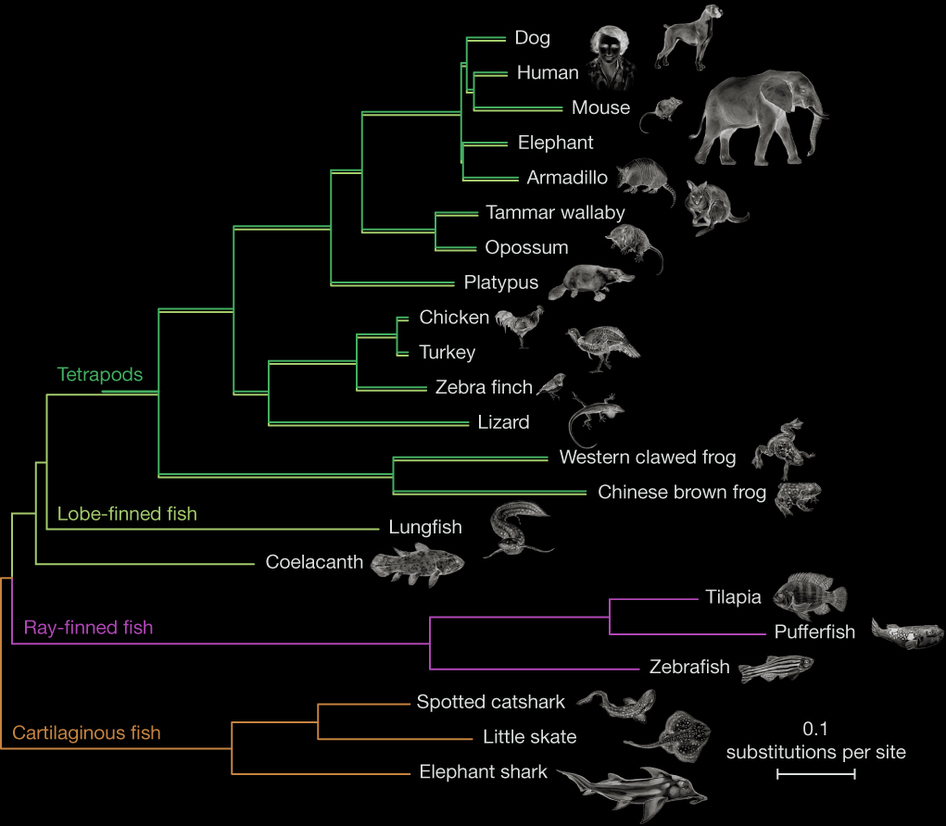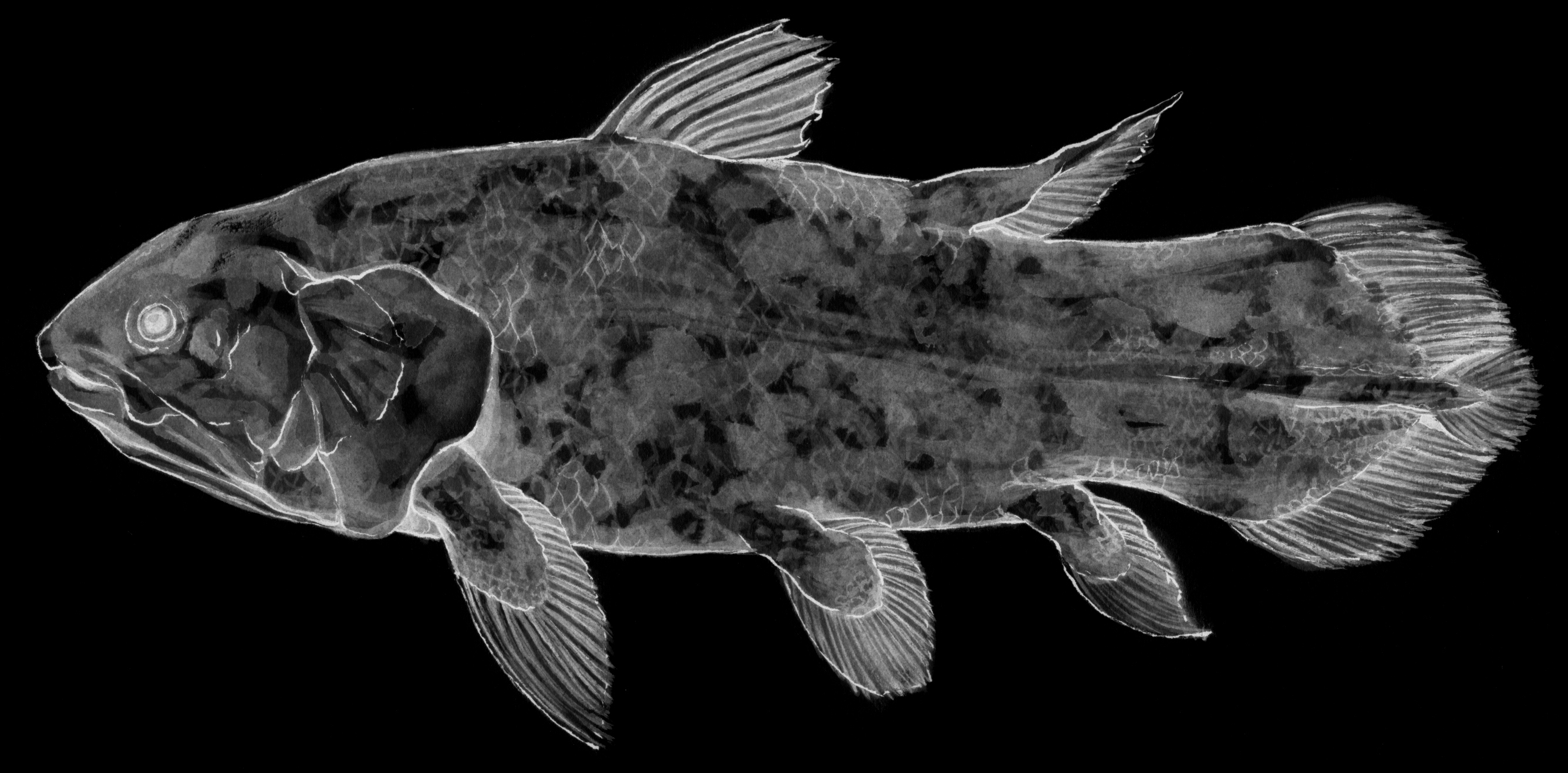The Coelecanth was thought to be extinct. Its presence as a living species was discovered in 1938 by Marjorie Courtenay-Latimer. It is an immensely important species for evolutionary biology, especially in understanding tetrapod evolution. The story of the discovery of Coelecanth has been covered by many high profile magazines.
Since its discovery from fossil remains the Coelecanth has been considered as the closest example for what could be as our last fish ancestor. This means that, it may have been the ancestor of the first fish that emerged out of water to colonize land. It is in a way a prequel to the famous Tiktaalik fossil beautifully articulated in the three part documentary “Your Inner Fish”.
The whole genome sequencing of the African Coelecanth in 2013 revealed its true place in the evolutionary tree. It appeared that the fish was more closely related to the lung fish which is another very old ancestral lobe-finned fish lineage.
The living Coelecanth revealed a remarkable feature about its biology. The fish is reproducing via internal fertilization. Internal fertilization is an exaptation for being a land dweller. Dissection of modern day specimen has revealed many embryos connected to their mothers by umbilical cord, structures that were also visible in exquisitely preserved armored fish fossils (Placoderms) discovered in Gogo formation Australia. Starting from the Devonian period some vertebrates started to give live birth after pregnancy.
Internal fertilization is a harbinger of another exciting evolutionary milestone: Copulation and sex. Internal fertilization marks the transition from r-selection to K-selection in vertebrates which was going to have important consequences in land vertebrates as well. K selection is a hallmark of parental care for the offspring.




0 Comments
You can be the first one to leave a comment.